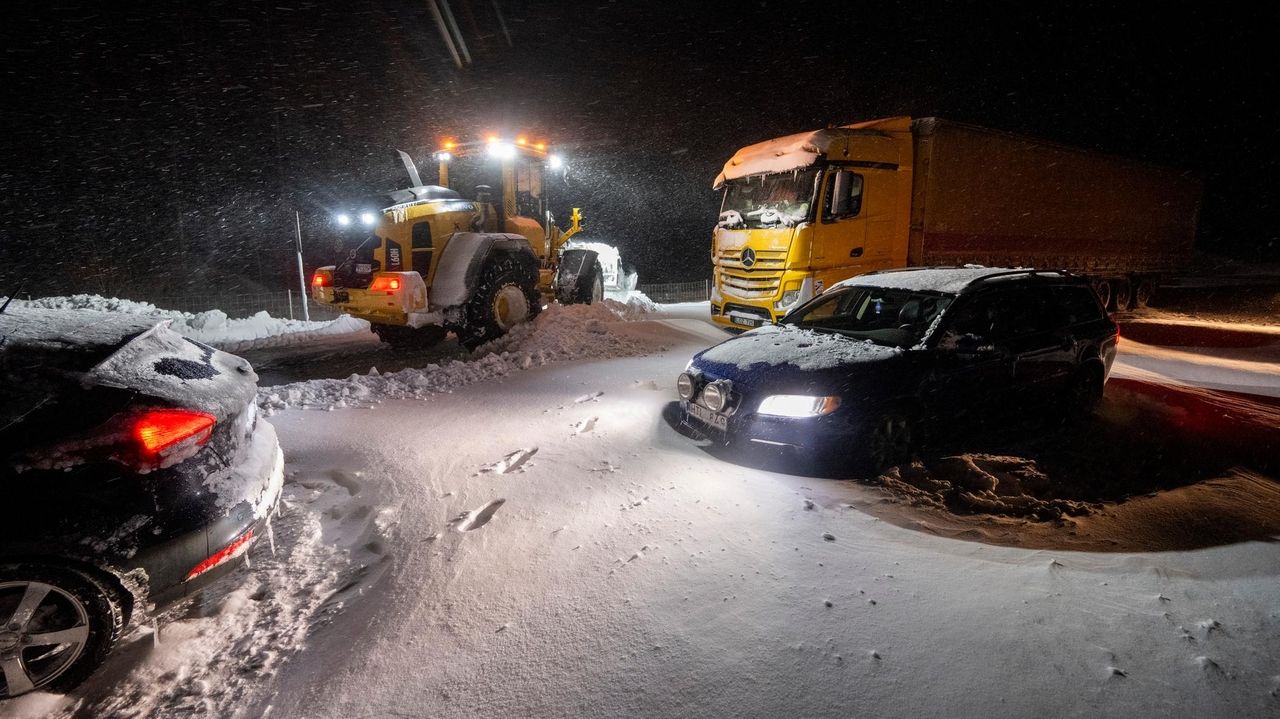COPENHAGEN, Denmark (AP) — Extremely cold temperatures compounded by gale-force winds and snow wreaked havoc across the Nordic region on Thursday, leaving thousands without power while others braved the cold for hours in their cars on clogged highways.
Heavy rains in Germany, France and the Netherlands caused renewed flooding in regions that have experienced persistent flooding over the past two weeks.
The frost disrupted transport across the Nordic region and traffic chaos was reported following the closure of stretches of motorway and main roads. Problems with rail traffic were also reported.
According to the Swedish public broadcaster, power was cut to around 4,000 households in arctic Sweden, where temperatures fell to minus 38 degrees Celsius (minus 36.4 degrees Fahrenheit). In the south of the country, motorists were stuck in their cars or were evacuated to a nearby sports complex where they spent the night.
In neighboring Denmark, police urged drivers to avoid unnecessary journeys as wind and snow raged in the north and west of the country.
In Finnish Lapland, the municipality of Enontekio, near the border with Norway and Sweden, recorded the country's lowest temperature this winter at minus 42.5 degrees Celsius (minus 44.5 degrees Fahrenheit) on Thursday. Meteorologists are forecasting even colder temperatures for the rest of the week.
A ferry traveling between the capitals of Norway and Denmark finally docked in Copenhagen on Thursday after around 900 passengers spent the night aboard the ship, which was idle in the Oresund between Denmark and southern Sweden. On Wednesday, weather prevented the Crown Seaways ship from entering the port of Copenhagen.

Snow is cleared with wheel loaders while cars and trucks are recovered and people are evacuated with the Home Guard's tracked vehicle in Ekeröd on the E22 between Hörby and Kristianstad in southern Sweden, Thursday, January 4, 2023. Up to 300 cars are stuck, according to police There were queues due to large amounts of snow falling on the road and limited access. Photo credit: AP/Johan Nilsson
In Germany, there was renewed heavy rainfall in regions where there had been persistent flooding over the past two weeks. Chancellor Olaf Scholz is planning his second visit this week on Thursday to inspect a dike and a sandbag filling plant in the eastern town of Sangerhausen.
After several days of rain and rising water, several cities in northern France were under water on Thursday. Hundreds of people have been evacuated in the last few days. Flooding continued in the area in November and December, from which some towns had still not recovered. Government ministers will travel to the region on Thursday.
The government in the low-lying Netherlands, which also faced extremely high water levels in rivers and lakes, said it would send pumps to France to help deal with widespread flooding.
“It has rained a lot recently, which means that water in France can no longer be drained properly. In many places, rivers have already overflowed their banks. That’s why it’s important to help each other get rid of the water as quickly as possible,” Infrastructure and Water Minister Mark Harbers said in a statement.

Snow is cleared with wheel loaders while cars and trucks are recovered and people are evacuated with the Home Guard's tracked vehicle in Ekeröd on the E22 between Hörby and Kristianstad in southern Sweden, Thursday, January 4, 2023. Up to 300 cars are stuck, according to police There were queues due to large amounts of snow falling on the road and limited access. Photo credit: AP/Johan Nilsson
The Dutch emergency pumps can each process 5 million liters (1.3 million gallons) of water per hour.
_

